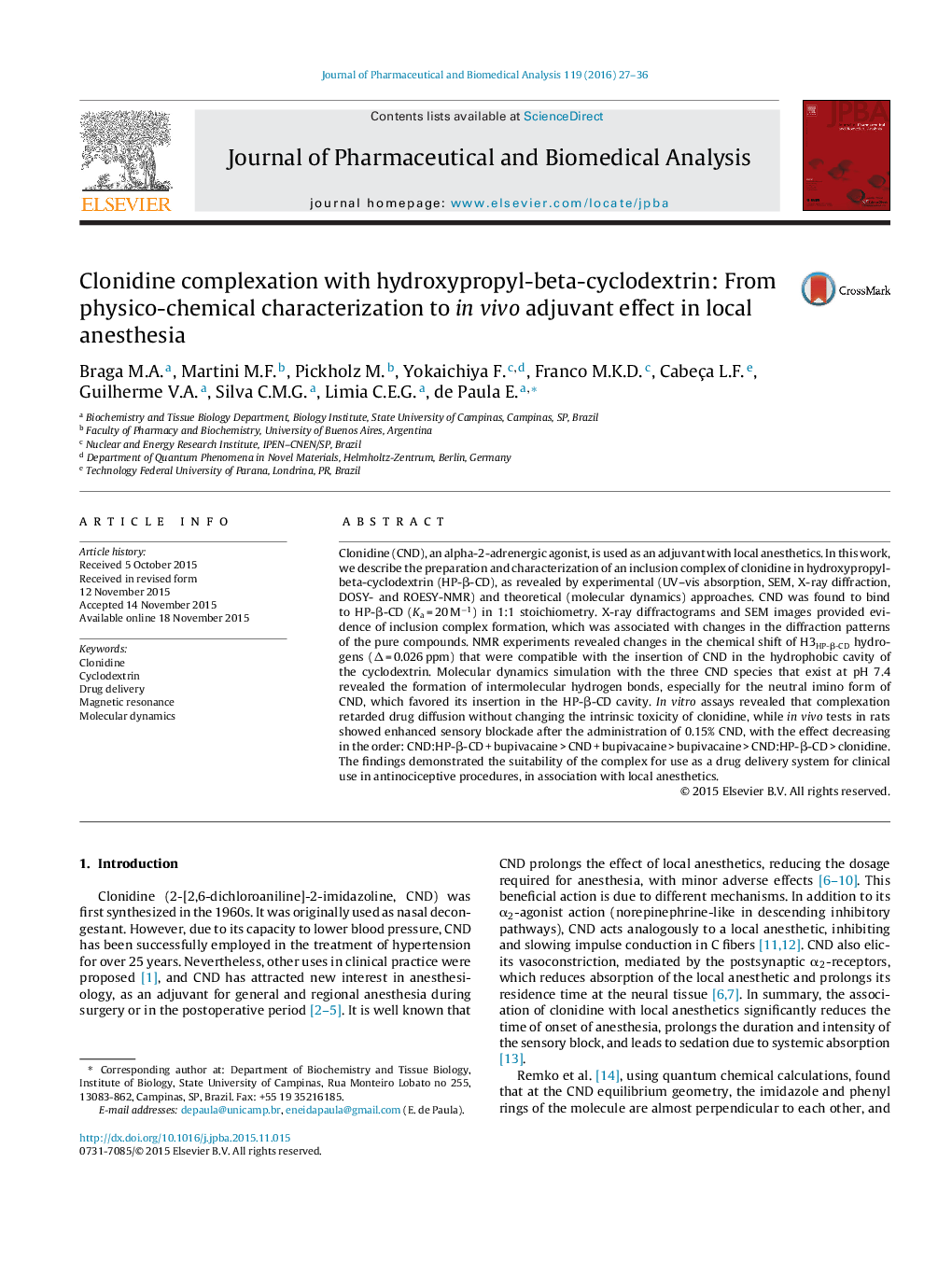| کد مقاله | کد نشریه | سال انتشار | مقاله انگلیسی | نسخه تمام متن |
|---|---|---|---|---|
| 1221056 | 1494616 | 2016 | 10 صفحه PDF | دانلود رایگان |
• 1:1Clonidine:hydroxypropyl-β-CD inclusion complex was prepared (Ka = 20 M −1).
• V-vis, X-ray and SEM provided evidences of the inclusion complexation.
• 1H NMR and molecular dynamics revealed details on the clonidine and HP-β-cyclodextrin interaction: by drug insertion into the CD cavity and also by establishing intermolecular hydrogen bonds.
• Complexation prolonged the diffusion rate of CND through polycarbonate membranes without changing the intrinsic drug toxicity.
• After intrathecal administration, CND promoted sensorial blockade of the caudal rat nerves and prolonged the anesthesia time promoted by the local anesthetic bupivacaine up to 540 min.
Clonidine (CND), an alpha-2-adrenergic agonist, is used as an adjuvant with local anesthetics. In this work, we describe the preparation and characterization of an inclusion complex of clonidine in hydroxypropyl-beta-cyclodextrin (HP-β-CD), as revealed by experimental (UV–vis absorption, SEM, X-ray diffraction, DOSY- and ROESY-NMR) and theoretical (molecular dynamics) approaches. CND was found to bind to HP-β-CD (Ka = 20 M−1) in 1:1 stoichiometry. X-ray diffractograms and SEM images provided evidence of inclusion complex formation, which was associated with changes in the diffraction patterns of the pure compounds. NMR experiments revealed changes in the chemical shift of H3HP-β-CD hydrogens (Δ = 0.026 ppm) that were compatible with the insertion of CND in the hydrophobic cavity of the cyclodextrin. Molecular dynamics simulation with the three CND species that exist at pH 7.4 revealed the formation of intermolecular hydrogen bonds, especially for the neutral imino form of CND, which favored its insertion in the HP-β-CD cavity. In vitro assays revealed that complexation retarded drug diffusion without changing the intrinsic toxicity of clonidine, while in vivo tests in rats showed enhanced sensory blockade after the administration of 0.15% CND, with the effect decreasing in the order: CND:HP-β-CD + bupivacaine > CND + bupivacaine > bupivacaine > CND:HP-β-CD > clonidine. The findings demonstrated the suitability of the complex for use as a drug delivery system for clinical use in antinociceptive procedures, in association with local anesthetics.
Figure optionsDownload as PowerPoint slide
Journal: Journal of Pharmaceutical and Biomedical Analysis - Volume 119, 5 February 2016, Pages 27–36
